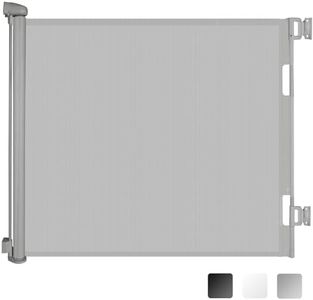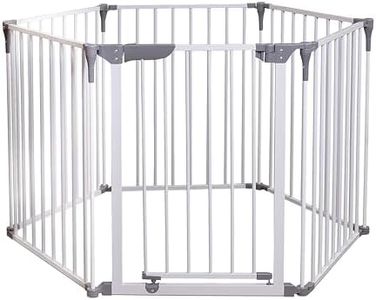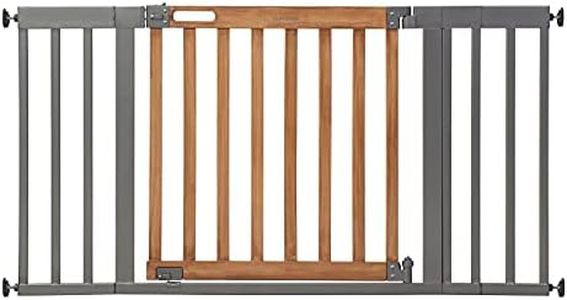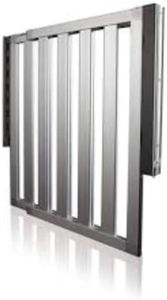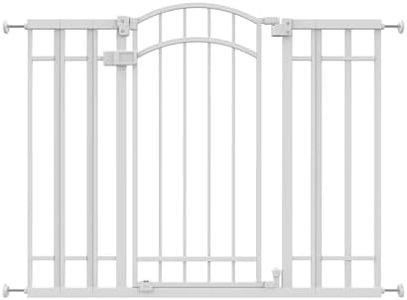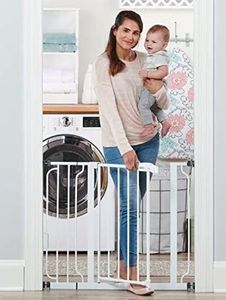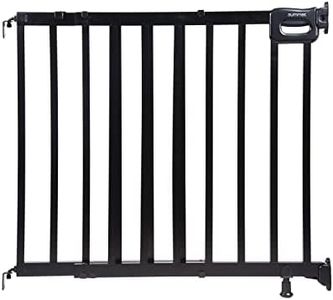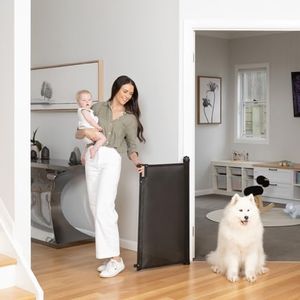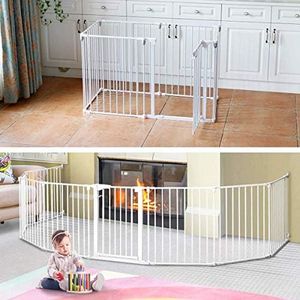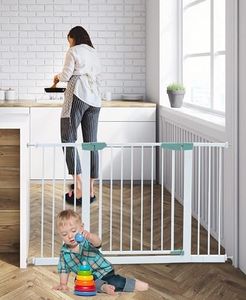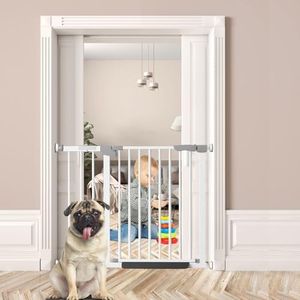We Use CookiesWe use cookies to enhance the security, performance,
functionality and for analytical and promotional activities. By continuing to browse this site you
are agreeing to our privacy policy
10 Best Baby Gates For Banisters
From leading brands and best sellers available on the web.Buying Guide for the Best Baby Gates For Banisters
Choosing a baby gate for banisters is an important decision for ensuring your child's safety, especially if you have stairs or openings that could be hazardous. The right gate needs to be secure, easy for adults to use, but tough for little hands to defeat. It should also fit well with the layout of your banisters, which can sometimes be tricky due to various shapes or widths. Always measure carefully and think about how often you'll need to pass through the gate, as convenience and ease of movement matter a lot for everyday use.Mounting TypeThe mounting type refers to how the baby gate attaches to your banisters or walls, and it's crucial for both safety and convenience. There are two main types: pressure-mounted and hardware-mounted. Pressure-mounted gates use tension to stay in place and are easier to install and remove without tools, but they’re generally not recommended for the top of stairs because they can be dislodged with enough force. Hardware-mounted gates use screws or brackets to attach securely to a banister or wall, offering a stronger hold and better safety at the top of stairs. Decide where you’ll use the gate, and choose hardware-mounted for higher risk areas like stair tops, while pressure-mounted may work for flat, low-risk spaces.
Banister CompatibilityBanister compatibility indicates how well the baby gate can attach to different shapes or types of banisters, such as round, square, or even wrought iron. Since not all stairways are the same, some gates come with adapters or special kits to fit securely to various banister designs without causing damage. Check the shape, size, and spacing of your banisters before buying and look for gates that offer adjustable mounts or adapter kits if your layout is unique. Picking a gate that can be properly installed prevents wobbly or unsafe setups.
Width and AdjustabilityWidth and adjustability mean how wide the gate can extend and how closely it fits the opening you’ve got. Doorways and staircases can vary significantly in width, so baby gates often list a minimum and maximum width range. Measuring your space accurately is vital. Gates that are adjustable or expandable handle unusual sizes better and can be reused in other spaces later. Always choose a gate that fits snugly and doesn't leave large gaps at the sides.
HeightThe height of a baby gate is the measurement from the floor to the top of the gate. A taller gate is generally more secure, especially for bigger or more adventurous toddlers who might attempt to climb. Standard gates are usually about 28 to 32 inches tall, but some are extra tall (36 inches or more) for families with larger children or pets. If your child is particularly active or tall for their age, consider a higher gate for extra security.
Opening MechanismThe opening mechanism refers to how the gate is opened by an adult. Some gates use simple latches or buttons while others require a two-step process for added security. There are also gates that swing open, slide, or even lift to open. If you’ll be carrying your child or items up and down the stairs, look for a one-handed operation for convenience. Security is also important—choose a mechanism that your child cannot easily figure out, especially as they get older and more curious.
Material and Build QualityThe material and build quality of a baby gate affect its durability and how well it stands up to repeated use. Common materials include metal, wood, or durable plastic. Metal gates tend to be strongest and best for high-traffic or critical safety spots like stairways, while wood or plastic may suit lighter, temporary use. Check that the materials are smooth, won’t splinter, and are easy to clean. For daily use, prioritize gates that feel solid and well-constructed so they last throughout the toddler years.
